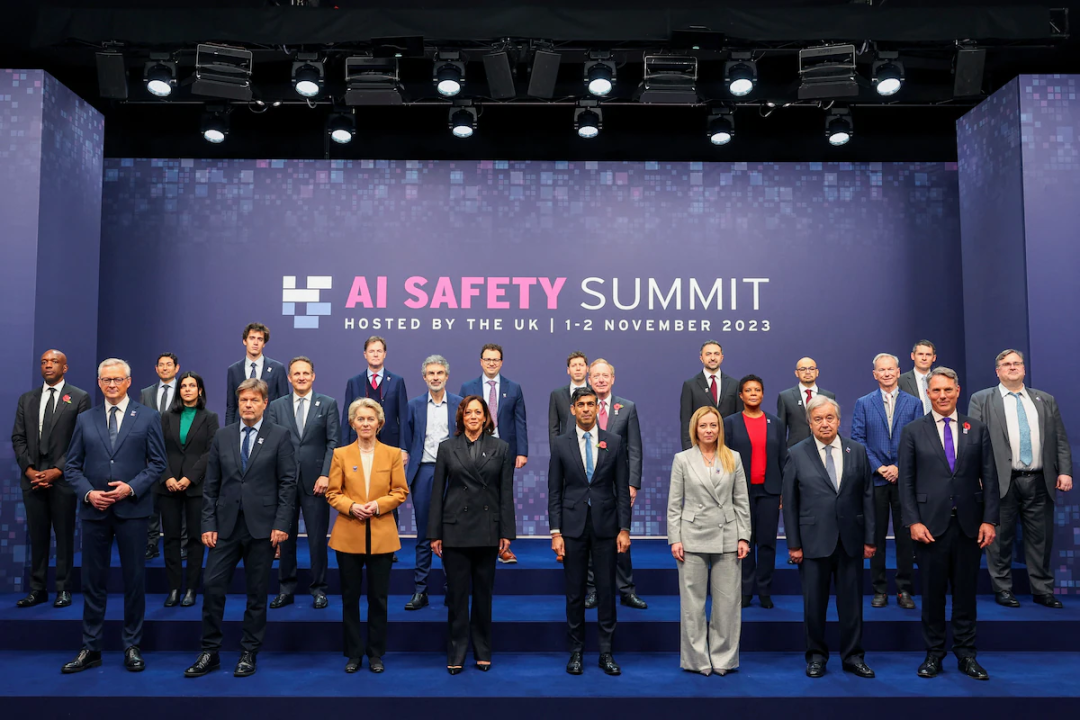In a thought-provoking revelation, AI luminary Andrew Ng, co-founder of Google Brain (now DeepMind) and an adjunct professor at Stanford University, suggests that major tech players are leveraging the fear of AI-induced human extinction to secure their market dominance through governmental regulations. Ng, speaking to the Australian Financial Review, contends that certain large tech companies prefer avoiding competition with open source initiatives, using exaggerated AI fears as a lobbying tool for legislation that could adversely impact the open-source community.
 AI Regulation Advocacy from Big Tech CEOs
AI Regulation Advocacy from Big Tech CEOs
This perspective gains significance when considering the advocacy for AI regulations by industry leaders. OpenAI CEO Sam Altman, DeepMind CEO Demis Hassabis, and Anthropic CEO Dario Amodei, signed a statement in May equating AI risks to those of nuclear wars and pandemics. The assertion that AI systems could spiral out of control and lead to human extinction, while a compelling sci-fi plotline, is viewed by experts like Aswin Prabhakar of the Center for Data Innovation as an exaggeration rather than a likely scenario.
The Long Road to Artificial General Intelligence (AGI)
Prabhakar emphasizes the considerable uncertainty surrounding the journey to creating artificial general intelligence (AGI), a form of AI surpassing human intellect across all domains. He asserts that even if AGI were achieved, the hypothetical scenario of it posing an existential threat by going rogue remains speculative. Prabhakar also highlights the overshadowed benefits of AI in healthcare, education, and economic productivity, emphasizing its potential to uplift global living standards.
Open Source AI and Government Regulation Concerns
The co-founder of the Opentensor Foundation, Ala Shaabana, raises concerns about scare tactics employed by Big Tech AI leaders. Shaabana questions the viability of developing conscious AI, suggesting it’s more of a public relations strategy. Government regulation, if broad and indiscriminate, could pose challenges for open-source AI communities. Prabhakar proposes a tailored approach, recognizing the unique incentives of open-source projects and creating exceptions in regulations to foster innovation.
 Impact of Executive Order on AI
Impact of Executive Order on AI
Shaabana criticizes the Executive Order on Artificial Intelligence released by the White House, asserting it favors Big Tech AI companies over open-source developers. He argues that compliance requirements, particularly reporting and approval processes, place undue burdens on smaller entities, hindering their ability to navigate regulatory red tape. This, he believes, might hinder not only the open-source community but also the scientific research community in various fields.
Unintended Consequences of AI Regulation
While regulations can potentially hinder small open-source AI players, Prabhakar notes their unintended consequence of benefiting established AI players. Strict regulations create entry barriers for emerging ventures, consolidating the market around well-established players with the resources to navigate regulatory complexities. This consolidation, he argues, shields big tech firms from emerging competition, potentially stifling innovation and limiting market diversity.
The Open Source Alternative
In the midst of debates surrounding AI regulations and the purported motivations of Big Tech, a crucial alternative emerges — the dynamic realm of Open Source AI. Ala Shaabana, co-founder of the Opentensor Foundation, sheds light on the nuances of this alternative, suggesting that it holds the key to addressing some of the concerns raised by both proponents and skeptics of stringent AI regulations.
The Essence of Open Source AI:
Shaabana underscores the fundamental principles driving the Open Source AI movement. Unlike proprietary systems, open-source AI fosters collaboration, transparency, and accessibility. It empowers a diverse community of developers, researchers, and enthusiasts to contribute to AI advancements freely. This collaborative ethos, Shaabana argues, is integral to pushing the boundaries of AI capabilities without succumbing to the limitations of closed, corporate-driven development.
Scare Tactics and the Need for Open Dialogue:
In the context of alleged scare tactics employed by Big Tech leaders, Shaabana contends that embracing open source is not just a technological choice but a philosophical one. By dispelling fears of AI-induced human extinction and emphasizing the practical benefits of AI, the open-source community encourages a more nuanced and open dialogue about the true potential and limitations of artificial intelligence.
The Holy Grail of Conscious AI:
Addressing concerns about the development of conscious AI, Shaabana navigates the complex terrain of creating an artificial intelligence that possesses consciousness. He questions the feasibility of achieving this holy grail when our understanding of consciousness itself remains incomplete. While recognizing the allure of conscious AI in theoretical discussions, Shaabana advocates for a pragmatic approach that acknowledges the current limitations of our scientific understanding.

Expressing reservations about the impact of government regulations on the open-source AI community, Shaabana delves into the intricacies of compliance requirements outlined in the Executive Order on Artificial Intelligence. He argues that the bureaucratic demands embedded in the order disproportionately favor major tech companies, creating barriers that smaller entities may struggle to surmount. This, he believes, poses a direct threat to the collaborative spirit and accessibility central to open-source AI initiatives.
Tailoring Regulation for Open Source Innovation:
In response to potential challenges posed by regulations, Aswin Prabhakar of the Center for Data Innovation suggests a nuanced approach. Prabhakar proposes recognizing the distinct incentives of open-source projects and tailoring regulations to fit the collaborative spirit inherent in these initiatives. By creating exceptions that acknowledge the unique dynamics of open source, he argues, regulations can coexist with and even enhance the innovative spirit of the open-source community.
The Unseen Consequences:
Shaabana raises a critical point regarding the unintended consequences of stringent regulations. While regulations may ostensibly aim to ensure ethical AI development, he highlights how these measures inadvertently fortify established players in the AI landscape. The financial and infrastructural capabilities of major tech firms, he argues, position them to navigate regulatory mazes, creating a disadvantage for smaller players and potentially stifling the emergence of innovative startups.
Preserving Diversity in the AI Landscape:
In light of concerns about market consolidation, Prabhakar emphasizes the importance of preserving diversity in the AI landscape. He notes that while regulations may inadvertently consolidate the market around well-established players, the tailored approach suggested for open source can act as a counterbalance. This approach aims to ensure that the regulatory framework encourages both innovation and competition, preventing the stifling of emerging ventures.
The Imperative of Open Source Empowerment:
Shaabana concludes by urging a careful consideration of the potential consequences of relinquishing control to major tech corporations. He stresses the role of open source in addressing government concerns about bias, transparency, and anti-competitiveness without resorting to stringent regulations. By empowering open-source AI initiatives, Shaabana envisions a future where the development of AI is guided by a diverse community, fostering innovation, transparency, and ethical practices.
In conclusion
the debate over AI regulations intertwines with concerns about market dynamics, open-source innovation, and the potential unintended consequences of stringent governmental oversight. As the tech industry grapples with these complex issues, the need for a balanced and tailored approach to AI regulation becomes increasingly apparent.
Read more: